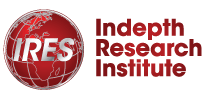Contents
Introduction
In 2024, medics in South Sudan began testing an AI-powered app that identifies venomous snakes in seconds. Developed with Médecins Sans Frontières (MSF), the tool helps rural clinics give correct treatment faster, saving lives in regions where antivenom supplies are scarce. This is the power of humanitarian AI.
This is more than a clever gadget. It’s a glimpse into how AI and humanitarianism are converging to transform crisis response in Africa. From disease surveillance in Nigeria to AI mapping of rural settlements in Sub-Saharan Africa, AI is no longer futuristic. It’s here, it’s growing, and it’s shaping how NGOs support millions of vulnerable people.
But what exactly does humanitarian AI mean? And how can African NGOs use AI responsibly, without falling into the traps of bias, over-reliance, or donor hype?
What Is Humanitarian AI?
Humanitarian AI refers to the use of artificial intelligence tools, models, and applications to support crisis prevention, response, and recovery. Unlike purely commercial AI, it is mission-driven: it prioritizes lives, dignity, and ethical responsibility.
It includes:
- AI data analysis to detect disease outbreaks early.
- Artificial Intelligence models to forecast migration flows.
- AI applications that process satellite images to guide aid logistics.
- Natural language processing (NLP) to translate emergency information into local African languages.
In short: AI in humanitarian action is about speed, accuracy, and better decisions under pressure.
Real Humanitarian AI Use Cases in Africa


1. Medical Aid: Snakes and Health Surveillance
The MSF snake app in South Sudan shows how AI can reduce mortality from rural snakebites.
Meanwhile, researchers in Nigeria are testing AI for public health surveillance to track disease outbreaks before they spread widely. (See study)
2. Mapping Invisible Communities
Many African NGOs struggle with poor maps. Ecopia’s AI-powered mapping project digitally mapped 342 million buildings and roads across Sub-Saharan Africa, enabling humanitarian teams to plan relief more accurately.
3. Forecasting Displacement
The Danish Refugee Council piloted AI models that forecast migration flows in the Sahel, allowing governments and NGOs to prepare food and shelter in advance.
4. Fighting Misinformation
AI tools like AIRA now help monitor social media in crisis zones, flagging false information that could worsen conflict or epidemics. In contexts where trust is fragile, this is lifesaving.
Key Roles of Humanitarian AI Support
AI is not magic. But when applied well, it strengthens how humanitarian teams operate. Some key roles of humanitarian AI are:
- Early Warning Systems: Predicting floods, food shortages, or disease outbreaks before they escalate.
- Geospatial Analytics: Using AI + satellites to map refugee camps or blocked roads.
- Supply Chain Optimization: AI in supply chain management can reduce delays in delivering medicine and food.
- Community Engagement: Chatbots and AI translation tools help NGOs communicate in multiple African languages.
- Monitoring and Evaluation (M&E): Automating data collection so NGOs can report to donors with accuracy and speed.
Challenges, Risks & Ethical Concerns of Humanitarian AI
Of course, AI is not a silver bullet. NGOs face real challenges when adopting AI. These include:
- Data Bias: Many AI models are trained on Western data, making them unreliable in African contexts.
- Infrastructure Gaps: Rural areas may lack internet, power, or devices to run AI apps.
- Privacy & Data Protection: Sensitive beneficiary data can be misused if not safeguarded.
- AI Colonialism: Outsiders often harvest African data to build global models, leaving local NGOs sidelined.
- Misinformation Risks: Ironically, AI can also generate fake content—making digital literacy critical.
The bottom line: AI must remain humanitarian-first, not technology-first.
Also read: The Best ESG Practices for Nonprofits.
Best Practices for African NGOs Using AI
So, how can humanitarian teams use AI wisely?
- Start Small: Pilot one project (e.g., AI for logistics), then expand.
- Keep Humans in the Loop: Use AI to support, not replace, decision-making.
- Build Capacity: Train local staff in AI basics; don’t outsource everything.
- Engage Communities: Test tools with real users, in real contexts.
- Prioritize Data Governance: Protect sensitive data with strong policies.
- Leverage Partnerships: Work with universities, open-source projects, and ethical AI labs.
As one African NGO leader put it: “We don’t just need AI for Africa. We need AI from Africa.”
Future Trends to Watch


Here are some humanitarian AI trends that African NGO leaders should watch and push for:
- Multilingual AI: Better translation for African languages, beyond English and French.
- Edge AI: Offline AI tools that work in rural areas with no connectivity.
- Climate & AI: AI for disaster response and climate adaptation will expand across drought-prone regions.
- Donor Funding: Expect more donors to demand AI adoption in project design.
- Ethical AI Standards: African NGOs will help shape global frameworks on responsible AI.
Conclusion
Humanitarian AI is entering a new era—one where African NGOs can leapfrog old barriers if they adopt AI responsibly.
From identifying deadly snakes to forecasting displacement and mapping rural communities, humanitarian AI is already proving its worth.
Explore Indepth Research Institute’s (IRES) executive humanitarian upskilling opportunities and gain skills to lead change.
FAQs on Humanitarian AI
1. What is humanitarian AI?
It’s the use of artificial intelligence to support crisis prevention, response, and recovery by NGOs.
2. How is AI used in African humanitarian programs?
It helps with disease tracking, disaster prediction, translation, mapping, and supply chain planning.
3. What are the risks of using AI in humanitarian work?
Key risks include data bias, privacy issues, misinformation, and weak infrastructure.
4. Can small NGOs in Africa actually use AI?
Yes. They can start with open-source tools, chatbots, or simple AI data analysis.
5. What does the future of AI and humanitarianism look like?
Expect multilingual tools, offline AI, climate-focused models, and stronger ethical standards.
Eric is a seasoned digital marketing strategist experienced in brand positioning, content strategy and results-driven campaigns. He has collaborated with leading brands and institutions across Africa to amplify their impact. At IRES, he leads strategic communication efforts and campaigns for leaders in public service and governance, humanitarian work and regional development. Email: [email protected]









Comment here